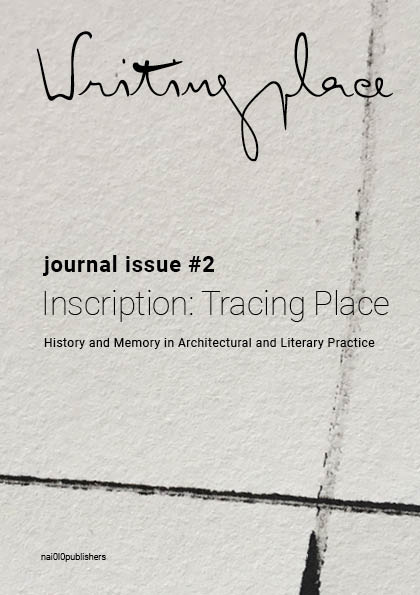‘A Cacophony of the Unheard and the Yet-to-Be’
Voicing the Lost and Found in the People’s Palace for Future Renewal
DOI:
https://doi.org/10.7480/writingplace.2.2639Keywords:
polyvocal, Historiography, recovery, renewal, publicAbstract
The people’s palace, Alexandra Palace in north London, is alive with voices – redolent with the history of popular entertainment. In order to fully evoke its narrative, the writing must be too: the proposed piece uses imaginative and critical writing, historiography and creative non-fiction, demonstrating a method of re/producing place. It explores and exemplifies the use of writing inand asarchitecture, as a tool in possible regeneration through inscription of its existence in writing inspired by observation, plans and images, first-person accounts, interviews and archive work. Together the areas of writing cultivate and investigate a method based on the factual (or ‘factish’) for greater understanding of the building’s cultural recovery, recognizing the role of the fictional or speculative in regeneration.
This adds practical value to the literary, as layers of expression and varied opinions and memories can feed into decisions about redevelopment under consideration. Speaking of the relationship between writing and architecture and their respective uses, Adrian Forty suggests that language makes buildings come alive, that it can ‘do things’ that buildings cannot, such as nuance, metaphor and storytelling (‘Writing Architecture?’, Royal Academy of Arts, 2014). Between evidence and imagination, this piece, rooted in the real and taking flight from it, brings these ideas together: the certainties of the material building and the multiple ‘truths’ of language.
Katherine Shonfield describes ‘what happens when we accept that architecture does tangibly exist, not as a pristine impervious whole, but in the perception of the beholder’ (Walls Have Feelings: Architecture, Film and the City(London: Routledge, 2000), 160). Plurivocity, an ‘imaginative method’ of uncovering and recovering a building’s specifics, offers a response. Using excerpts from three ‘scenes’ – ‘People/Public’, ‘Lost/Missing’, ‘Found/Futures’ – that formed part of my PhD (‘Writing Alexandra Palace: Plurivocity as a method of cultural recovery of buildings’, Royal College of Art, 2016), an understanding forms of how the palace can be renewed, addressing and responding to what its publics need and want from it.
The term ‘people’s palace’ is examined in relation to public space, and to the inherent contradictions of exclusion and openness in a palace, in public ownership since 1900. A consideration of what the building lacks is an essential condition for planning or conjecturing on any reinvigoration. An outline of what the palace could be for, how it could be programmed, reaches toward its next phase of existence with new and adapted suggestions for revitalization and reprogramming as a driver of regeneration. More than simply memorializing or adding forgotten strands of history, this piece examines how spaces were produced, how they exist now and how they can be renewed and transformed: looking at past, present and future.
References
Ainley, Rosa, Writing Alexandra Palace: Plurivocity as a method of cultural recovery of buildings, unpublished thesis (London: Royal College of Art, 2016)
Aslet, Clive, People’s Palace Lives Again, Country Life, 10 January 1985.
Brown, Stevan, The People’s Palace: Alexandra Palace & Its Changing Role in Society, AA Quarterly, April 1970, 37-45.
Forty, Adrian, Words and Buildings: A Vocabulary of Modern Architecture (London: Thames & Hudson, 2004)
Harris, Janet, Alexandra Palace: A Hidden History (Stroud: Tempus, 2005)
Havik, Klaske, Urban Literacy – Reading and Writing Architecture (Rotterdam: nai010 publishers, 2014)
Jauss, Hans Robert, Toward an Aesthetic of Reception (Minneapolis: University of Minnesota Press, 1982)
Jones, Owen, Description of Building and Drawings for Palace of the People, 1858.
Alexandra Palace Action Group, Palace Guard, Alexandra Palace Action Group, Issue 1, 1974, London.
Lejano, Raul, Ingram, Mrill and Ingram, Helen (eds.), ‘Linking Narratives to Practice’ in The Power of Narrative in Environmental Networks (Cambridge, MA: MIT Press, 2013)
Van Noord, Gerrie (ed.), To Have and To Hold: Future of a Contested Landscape (Glasgow/Edinburgh: Luath Press, 2011)
Shonfield, Katherine, Walls Have Feelings: Architecture, Film and the City (London: Routledge, 2000)
Sebald, W.G., The Emigrants (London: Vintage Classics, 2002)
Sebald, W.G., Austerlitz (London: Penguin Books, 2001)
Sinclair, Iain, Sorry Meniscus: Excursions to the Millennium Dome (London: Profile, 1999)
Sinclair, Iain, Lights out for the Territory (London: Granta, 1997)
Stoner, Jill, Towards a Minor Architecture (Cambridge, MA: MIT Press, 2012)



